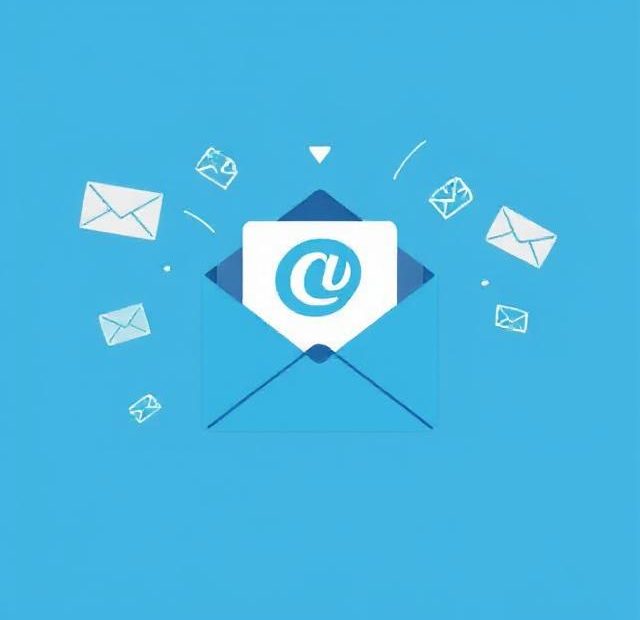In today’s fast-paced digital world, your email has just seconds to make an impression. That’s where visuals come in. They play a crucial role in grabbing attention, reinforcing your message, and driving user action. When used wisely, visuals can significantly enhance the impact of your content and improve performance metrics across the board.
In this blog post, we’ll explore how to use visuals effectively in email campaigns to create engaging, aesthetically pleasing, and high-converting emails.
Why Visuals Matter in Email Marketing
Visual content isn’t just a design element—it’s a marketing tool. Emails with well-placed visuals tend to have:
-
Higher open and click-through rates
-
Stronger emotional impact
-
Better retention of information
-
Improved brand recognition
Images, icons, videos, and infographics help communicate complex ideas quickly and keep readers engaged. According to studies, the human brain processes visuals 60,000 times faster than text, making them essential in any email strategy.
Types of Visuals to Use in Email Campaigns
To use visuals effectively in email campaigns, it’s important to choose the right types of imagery. Each serves a different purpose and adds value in a unique way.
1. Product Images
Ideal for e-commerce emails, product images showcase what you’re selling in a clear and compelling way. Use high-quality, properly lit images with a clean background to help your product stand out.
2. GIFs and Animated Visuals
GIFs are a fun and dynamic way to draw attention without slowing down load times like video might. They’re great for:
-
Highlighting new features
-
Demonstrating product use
-
Adding personality and movement to your message
3. Infographics and Charts
For data-heavy content, visualizing information helps readers absorb details faster. Use infographics, pie charts, or bar graphs to present statistics in a more digestible form.
4. Hero Banners
Hero images at the top of an email set the tone and reinforce your message visually. This is where you should focus on bold, brand-aligned imagery with minimal text overlay.
5. Icons and Illustrations
These smaller visuals break up long text blocks and guide the reader’s eye through the email. Use them to mark sections or emphasize key points without overwhelming the design.
Best Practices for Using Visuals in Email Campaigns
To truly benefit from visuals, they must be used strategically—not just for decoration.
✅ 1. Keep It Relevant
Your visuals must directly support your message. Avoid using stock photos that feel generic or disconnected. Ask: “Does this image enhance understanding or encourage action?”
✅ 2. Optimize Image Size and Format
Heavy visuals can slow down email loading, especially on mobile or poor connections. To avoid this:
-
Compress images without losing quality (use tools like TinyPNG)
-
Stick to .JPG or .PNG formats
-
Keep GIFs under 1MB if possible
✅ 3. Use Alt Text for Every Image
Alt text appears when images don’t load and helps screen readers describe the image to visually impaired users. Including descriptive alt text also boosts accessibility and improves your email’s SEO.
✅ 4. Maintain a Visual Hierarchy
Use visual hierarchy to guide your reader’s attention in a logical flow. For example:
-
Hero image → Headline → Supporting image → CTA
-
Bold colors and sizes for CTAs
-
White space around images to keep them from cluttering the layout
✅ 5. Ensure Mobile Responsiveness
Since over half of emails are opened on mobile devices, test how visuals display on smaller screens. Use responsive templates and check that images scale properly without breaking layout or distorting proportions.
Common Mistakes to Avoid
When learning how to use visuals effectively in email campaigns, steer clear of these common pitfalls:
-
❌ Overloading emails with too many images
-
❌ Using visuals that don’t load quickly
-
❌ Relying solely on images for key messages (some clients block images by default)
-
❌ Not balancing visuals with supporting text
-
❌ Forgetting to include alt text
A good rule of thumb is to maintain a balance—roughly 60% text and 40% visuals.
Measuring Visual Impact
To know if your visuals are effective, track performance with A/B testing. Try testing:
-
With vs. without hero images
-
Different product photo angles
-
Static image vs. GIFs
-
Infographic layout styles
Monitor metrics like click-through rates (CTR), open rates, and time spent viewing the email to understand what resonates with your audience.
Visuals That Convert: Real-World Examples
Some of the most successful brands use visuals in emails with precision:
-
Apple uses minimalism and bold product imagery to highlight design.
-
Grammarly includes personalized infographics in their weekly reports.
-
Headspace uses calming illustrations that match their tone and message.
The common thread? Every image serves a purpose and reinforces the email’s content and goal.
Final Thoughts
Using visuals effectively in email campaigns is about more than just making your emails look good—it’s about enhancing communication, improving engagement, and driving conversions.
From carefully chosen images to animated GIFs and data-driven infographics, visuals can amplify your message when they’re optimized and purposeful. Pair strong visuals with clear CTAs, responsive layouts, and consistent branding, and your email campaigns will not only look better—they’ll perform better too.
Also, you can learn more about Emails Look Great here.
